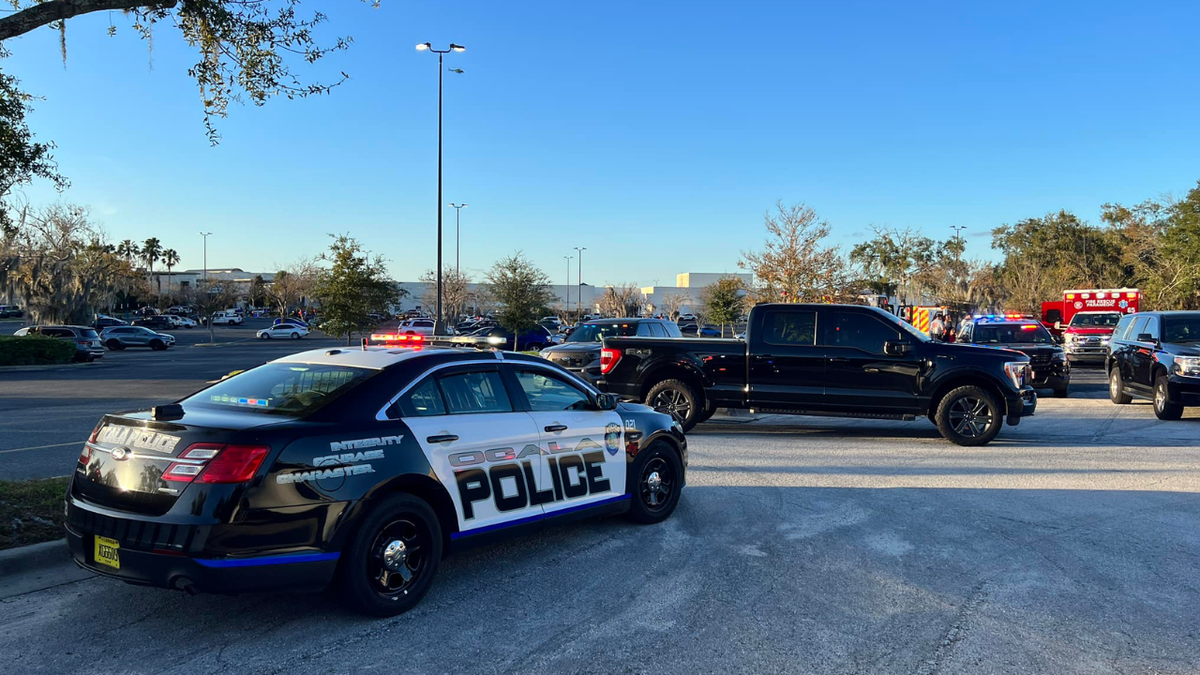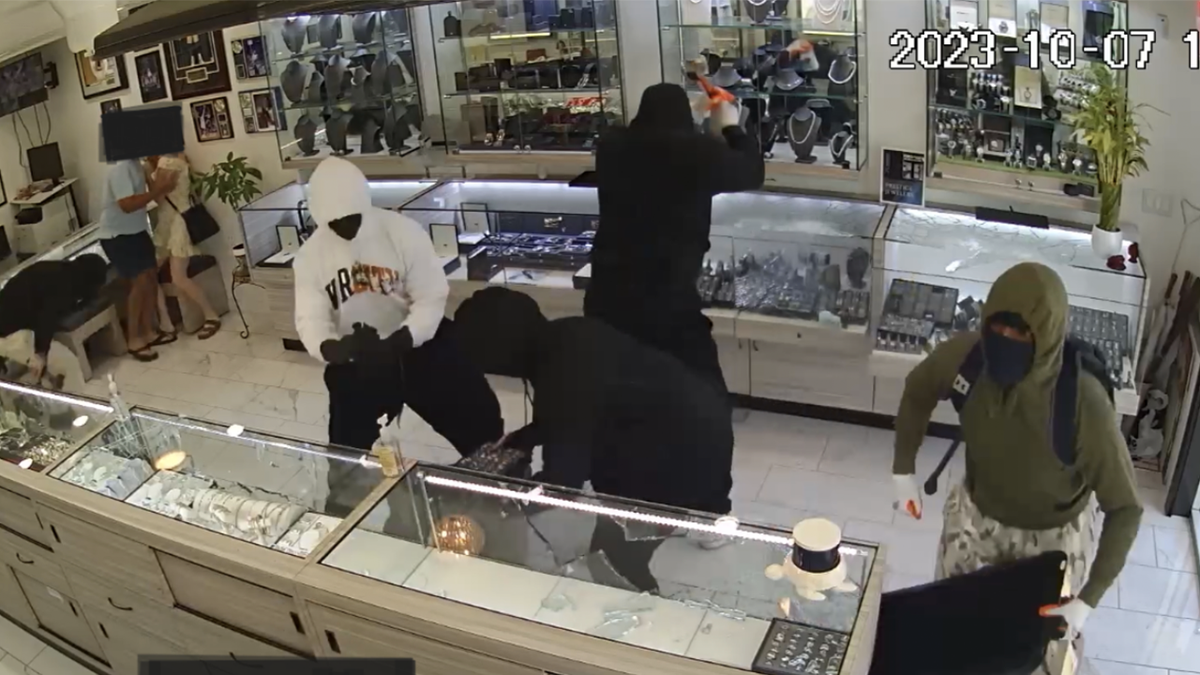FIRST ON FOX: An independent group of law enforcement officials and analysts claim violent crime rates are much higher than figures reported by the Federal Bureau of Investigation in its 2023 violent crime statistics.
The Coalition for Law Order and Safety released its April 2024 report called “Assessing America’s Crime Crises: Trends, Causes, and Consequences,” and identified four potential causes for the increase in crime in most major cities across the U.S.: de-policing, de-carceration, de-prosecution and politicization of the criminal justice system.
The lead authors of the report are Mark Morgan, former assistant FBI director and acting commissioner of U.S. Customs and Border Protection during the Trump administration, and Sean Kennedy, an attorney for the Law Enforcement Legal Defense Fund.
The new report reveals three major findings: that the U.S. faces a public safety crisis beset by high crime and an increasingly dysfunctional justice system; that crime has risen dramatically over the past few years and may be worse than some official statistics claim; and that although preliminary 2023 FBI data shows a decline in many offenses, violent and serious crime remains heightened compared to 2019 data.
Researchers wrote, “to say crime is down is like descending from a tall peak and standing on a high bluff, saying you are closer to the ground – a true but misleading statement.”
CALIFORNIA DEMS WANT TO BLOCK BILL THAT WOULD RECRIMINALIZE LOITERING AS PROSTITUTION SPIRALS IN BIG CITIES
The report coincides with a March 2024 Gallup poll which found that nearly 80% of Americans say they personally worry about crime and violence “a great deal or fair amount,” placing it ahead of other issues and on par with inflation.
“Americans’ support for greater law enforcement and stiffer criminal penalties has increased as polls show that the public believes crime has risen, and they feel less safe,” the report noted.
Through aggregated data sets directly from more than 70 of the nation’s largest police departments and victim surveys, researchers claim violent crime has been “substantially elevated in major cities” compared to pre-2020 levels. The group’s research also showed that due to significant under-reporting of certain crimes, the FBI’s official data doesn’t completely capture the full snapshot of crime in the U.S.
“There’s a series of caveats attached to the FBI data that the FBI doesn’t make as clear as they should,” Sean Kennedy, one of the lead researchers, told Fox News Digital in an interview.
STATE MAKES RETAIL THEFT A FELONY AS ORGANIZED CRIME PROLIFERATES

Kennedy said that, particularly in the aftermath of the 2020 George Floyd riots, several police departments redefined the classifications for certain violent crimes and transitioned away from a decades-old recording system.
“If you classify something as an aggravated assault, it’s a violent crime or a felony, but if you classify it as a simple assault, it’s then a misdemeanor and a non-violent crime,” Kennedy said. “That is a world of difference when it comes to how the media is going to portray whether or not your department is fighting violent crime.”
However, the police are not the only ones appearing to under-report. Businesses and individuals who are victims of violent crimes have also shown a pattern of reluctance when it comes to calling the police. The Loss Prevention Research Council’s survey of retailers sheds light on the reasons behind the lack of reporting. The study shows that typically, business owners tend to harbor the belief that police will not respond promptly or investigate crimes, and prosecutors will not pursue charges against the perpetrators.
“It is difficult to measure how much crime is underreported, often ‘downcharged,’ by law enforcement since the number of reported crimes reflects the categorizations of police agencies themselves,” the researchers wrote.
‘BURGLARY TOURISM’ PLAGUES SOUTHERN CALIFORNIA AS UNVETTED FOREIGNERS RAID LUXE HOUSES

“FBI data is taken as gospel truth, when the FBI itself puts a series of footnotes all over their own data,” Kennedy said.
In 2019, 89% of municipal police departments – spanning about 97% of the population – submitted crime data to the FBI. To compensate for incomplete data, the FBI will fill in gaps using “inferred” statistics, the report notes.
However, by 2021, less than 63% of departments spanning across 65% of the population submitted crime data. Several big cities – Los Angeles, New York City, and Chicago – did not submit crime data at all to the FBI last year.
When reached on Monday, the FBI said it had no comment on an external report. It noted that participation in the Uniform Crime Reporting program is voluntary – the UCR program is how the FBI collects crime data from local law enforcement agencies.
Yet this month, officials in the New Orleans Police Department announced they had under-reported sex crime data that was filed to the FBI in 2021 and 2022. In 2014, a Los Angeles Times investigation found that the Los Angeles Police Department had “systematically downgraded” serious violent crime offenses to minor offenses between 2005 and 2014.
Researchers added, “There is no evidence that police agencies or reporting authorities consistently or persistently engage in such misreporting or manipulation, but it represents an unknowable data gap between actual crime levels and official statistics.”
ZERO CASH BAIL TO BLAME FOR ‘BRAZEN’ SMASH AND GRAB ROBBERIES IN LA, POLICE UNION SAYS

The report places the blame for the high crime rate on soft-on-crime initiatives, which falls in line with several states backpedaling course on so-called soft-on-crime policies. In the last year, Democratic lawmakers in California and New York have begun introducing bills to restore stricter penalties for certain violent crimes.
Read the full article here